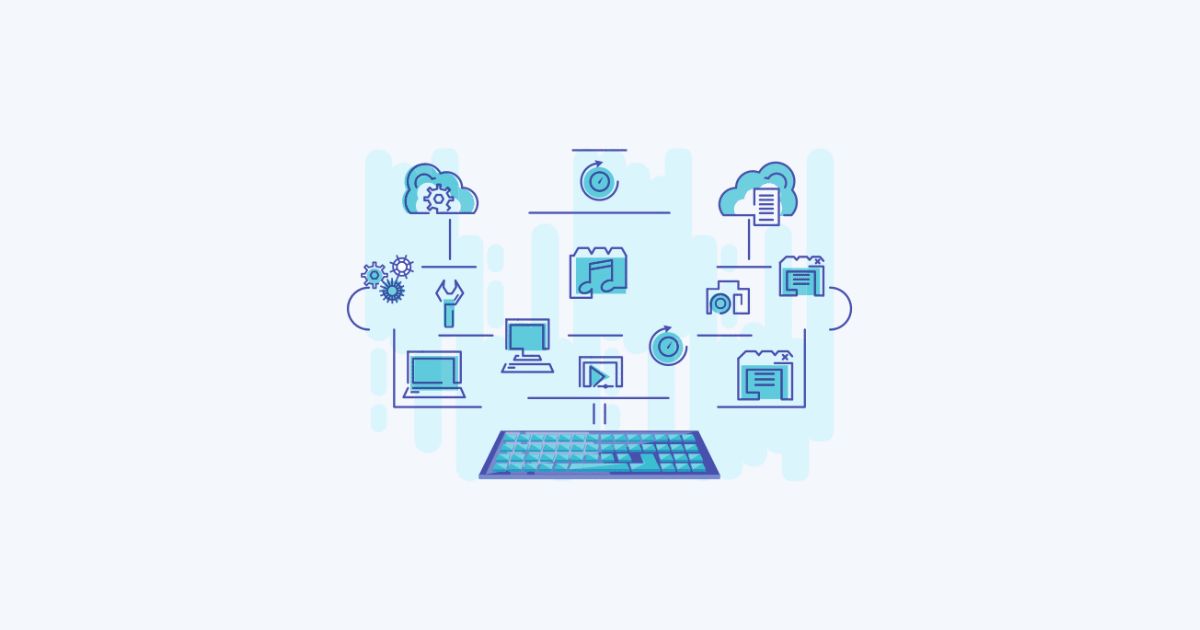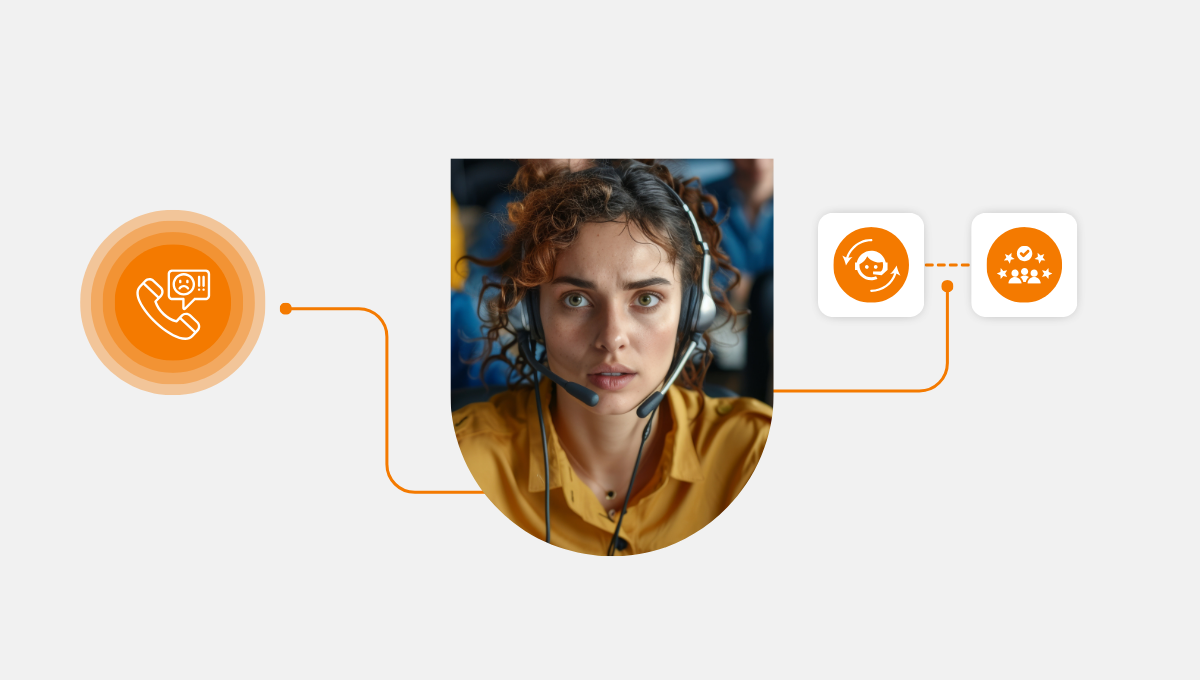PRI, or Primary Rate Interface, is a crucial component of telecommunications infrastructure. However, it is not suitable for every business. Read this guide to figure out if it is right for your business.
Primary Rate Interface (PRI) is a telecommunications standard used in business phone systems that allows for multiple voice and data transmissions over a single line. But what is PRI, exactly?
Read on to learn what PRI is, its features, pros and cons, alternatives to PRI, and more.
What is PRI (Primary Rate Interface)?
It stands for Primary Rate Interface, and it’s part of the broader Integrated Services Digital Network (ISDN) framework. Unlike its counterpart, Basic Rate Interface (BRI), which is suited for smaller setups, PRI provides more channels and is thus ideal for larger operations.
A typical PRI line provides up to 23 separate channels for voice or data communication, plus an additional channel for signaling (used for establishing and breaking down telephone calls). This setup enhances the efficiency of communication systems in businesses by consolidating connections, which simplifies the network and reduces costs.
The term ‘PRI phone’ refers to the endpoint device in a PRI system. Understanding PRI and its capabilities can significantly impact your business communication strategies, offering both robustness and reliability.
This transmission is based on the T-carrier (T1) in the US, Canada, and Japan, while the E-carrier (E1) is common in Europe and Australia.
PRI lines are commonly used by businesses for their phone systems.
Types of PRI channels
There are two types of PRI channels: T1 and E1. Let’s look at the details:
T1 PRI channels
T1 PRI channels are digital communication channels that provide 24 voice channels, each with 64 Kbps capacity. This means that a T1 PRI line can handle a total of 1.544 Mbps of data.
T1 PRI lines are commonly used by small and medium-sized businesses in North America and Japan.
E1 PRI channels
E1 PRI channels provide 30 voice channels, each with 64 Kbps. This means that an E1 PRI line can handle a total of 2.048 Mbps of data. E1 PRI lines are commonly used by businesses in Europe and other parts of the world.
Both T1 and E1 PRI channels are delivered over trunk lines. A trunk line is a communication line that carries multiple voice or data channels between two locations.

How does PRI work?
A PRI splits a T1 or E1 line into multiple channels, each carrying voice or data traffic. Signal information is sent over a separate D-channel, providing enhanced features and functionality.
Each PRI link channel has a data transfer rate of 64 Kbps. The combined rate of the entire line over a T-1 link is 1.544 Mbps.
Features of a Primary Rate Interface
PRI is often used by businesses and organizations for high-quality voice and data transmission, as well as advanced features like caller ID, call forwarding, and call waiting.
Here are some of the key features of a PRI:
- Automatic call distribution
PRI enables ACD functionality via a PBX system that supports ACD features. The PRI trunk carries multiple voice channels between the PBX and the PSTN (Public Switched Telephone Network), allowing for the simultaneous handling of multiple calls.
- Flexible configuration
PRI lines can be configured in a variety of ways to meet business needs. For example, channels can be allocated for voice or data transmission, and the number of channels can be adjusted based on demand.
- Direct inward dialing (DID)
PRI lines support DID, which allows callers to directly dial an extension number without going through a receptionist or automated attendant. It can improve call handling efficiency and provide a better customer experience.
- Caller ID
PRI lines support Caller ID, which allows the receiver to see the caller’s phone number and name. This feature can help businesses screen calls and improve customer service.
What is the difference between PRI and SIP?
PRI (Primary Rate Interface) and SIP (Session Initiation Protocol) are both protocols used for voice communication. However, there are several differences between them.
- Technology: PRI is a circuit-switched technology, while SIP is a packet-switched technology.
- Setup: PRI requires physical hardware installation, while SIP is software-based.
- Capacity: PRI has a fixed capacity of 23 channels per line, while SIP can handle unlimited channels.
- Flexibility: SIP is more flexible than PRI and works with different networks, including VoIP and PSTN. PRI is designed to work with PSTN only.
- Cost: PRI is generally more expensive than SIP because of the hardware required for installation and maintenance.
What are the pros and cons of PRI?
Some of the pros and cons of PRI:
Pros
- Reliability: PRI is reliable and consistent for voice and data transmissions with a dedicated circuit that minimizes signal loss or interference.
- Advanced features: PRI offers advanced features such as caller ID, call waiting, call forwarding, and three-way calling, which are not available in traditional analog lines.
- Integration with PBX systems: PRI integrates seamlessly with PBX (Private Branch Exchange) systems, which allows businesses to manage their phone systems more efficiently.
- Improved call quality: PRI provides superior call quality compared to analog lines, making it an essential choice for businesses that place great importance on phone communications.
Cons
- Cost: PRI can be costly for small businesses that do not need many channels. Additional equipment and infrastructure are needed, which increases the system’s overall cost.
- Complexity: PRI is a complex system that requires technical expertise to set up and maintain. It may not be suitable for businesses without a dedicated IT team.
- Limited flexibility: PRI is not as flexible as other modern communication systems such as VoIP. It requires physical connections between two locations, which limits its flexibility and mobility.
- Limited geographic coverage: PRI is not available in all geographic locations. It needs physical connections and infrastructure, which may not be available in some areas.
In conclusion, PRI is a reliable communication system that offers advanced features and improved call quality. However, it can be expensive and complex to set up and maintain.

Alternatives to Primary Rate Interface
Each of these technologies offers unique features and benefits and you should choose the one that best suits your needs.
Session Initiation Protocol (SIP)
SIP is a protocol used for initiating, modifying, and terminating interactive user sessions. SIP is an IP-based technology that provides more flexibility and scalability than PRI.
It can be used for voice, video, and instant messaging. It supports a range of devices, such as smartphones and tablets.
Voice over Internet Protocol (VoIP)
VoIP is a technology that enables voice communication over the Internet. VoIP is a cost-effective alternative to PRI as it eliminates the need for separate voice and data networks.
It also offers call forwarding, voicemail, and video conferencing.
Reasons to use PRI for business
Here are some of the top reasons to use PRI for your business:
High-quality voice calls
PRI provides high-quality voice calls that are clear and free of background noise. This is because PRI uses digital signal processing (DSP) technology to convert analog voice signals into digital signals, which are then transmitted over the network.
This results in a clearer voice communication experience.
Reliable
PRI is a highly reliable communication system that provides businesses with guaranteed service levels. It is designed to provide a high-quality connection that is always available, even during peak usage times.
This makes it the appropriate solution for businesses that require a reliable and consistent communication system.
Integration with other systems
PRI can be easily integrated with other communication systems, such as PBX and VoIP. This allows businesses to create a unified communication system that can be easily managed and maintained.
Final thoughts
PRI is a powerful technology that provides high-quality voice and data transmission services to businesses. It offers many features and can be a good option.
However, it’s also necessary to remember that installation is costly because it requires hardware. And there are restrictions such as limited geographic coverage.
If you’re looking for a solution without borders, consider Call Center Studio’s business phone number service. This way, you can manage your international operations and save costs while establishing a strong communication line with your customers.
Visit Call Center Studio to learn more.




